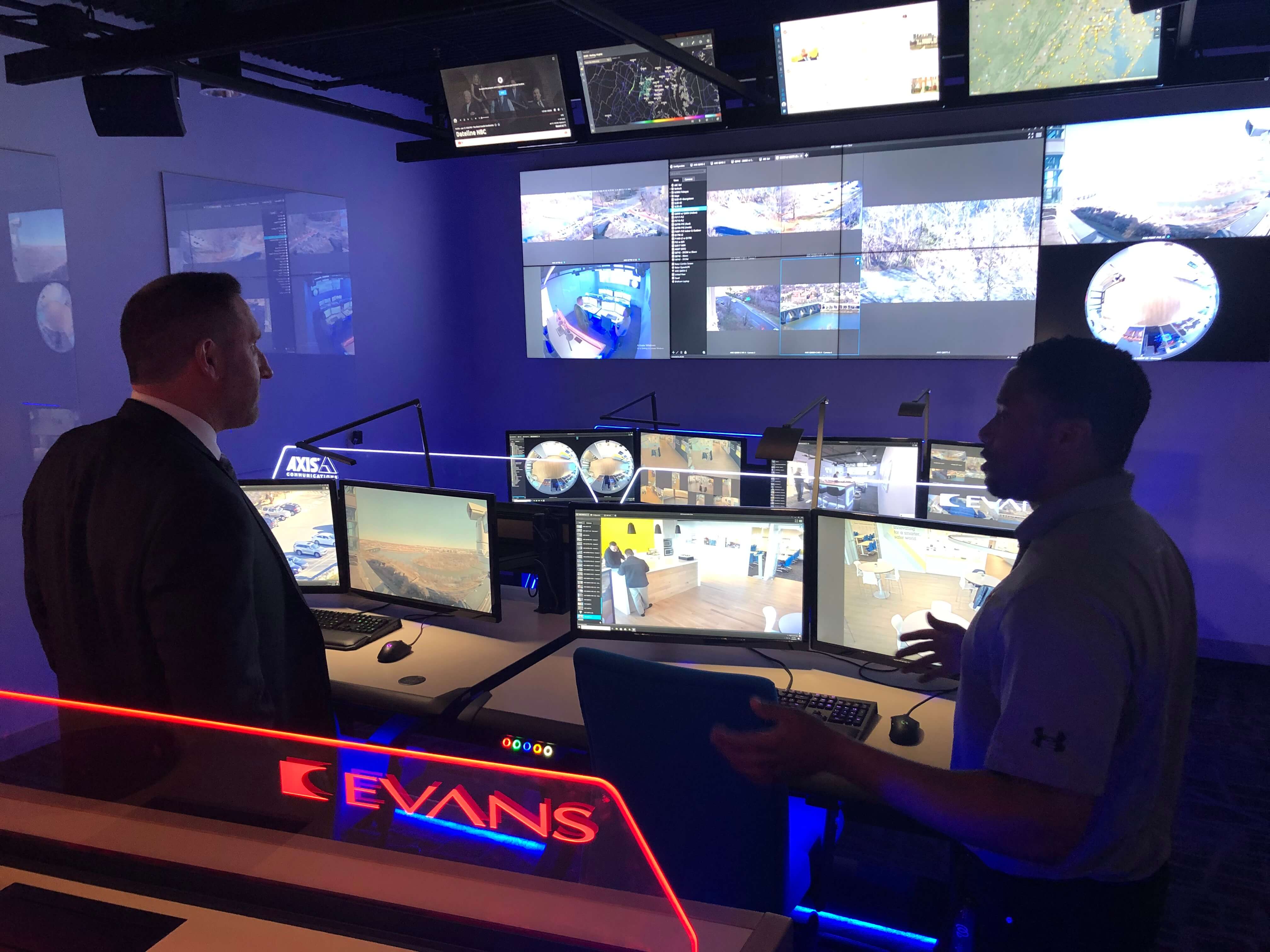
Having a security control and command center helps you have a central location for all your security equipment, and, more importantly, a place where your security team can efficiently operate to keep your building safe. But when building a command center, there are many considerations to take into account.
While having a security control and command center is important, having an efficient one is just as critical. Having the proper equipment, layout, and support is essential to having the best setup for your needs. How can you build an efficient security control and command center? Here are our top tips!
Keep Your Goal in Mind
The goal of your security control and command center is to ensure that, during normal operations as well as emergencies, your security personnel can appropriately respond and communicate with the outside world. The core objective is to make it as simple as possible for your team to act quickly in a crisis with integrated communication [1]. Your technology, lighting, and even your furniture can all factor into this. Having accessible, well-placed equipment can help streamline your staff’s efforts to keep everyone safe. Keep your goal in mind when designing your security control center to ensure the best results.
Correctly Position the Central Workstation
Typically, a command center has a central desk which is shaped in an arc or L-shape in front of monitors or a wall of monitors depicting images from surveillance cameras. Other technologies include computers that monitor systems such as the fire alarm, sprinkler, and access control system. Since the monitors will take up a significant amount of wall space, it’s important to have the central workstation positioned so your operators can properly see the security footage without difficulty. To accomplish this, having adequate ceiling height is important, and workstations will need to be at least 15 feet back from a wall of monitors to give your team the most comfortable and advantageous view. For workstations with a desktop, having the monitor about an arm’s length away should be appropriate in most situations [2].
Don’t Make the Center Too Small
While it’s tempting to conserve space in your security control and command center—especially if you only have a few employees in the room at any given time—remember that, in an emergency, the number of people needing to access the center will quickly increase. The center should be able to accommodate a large group of people.
In addition, you don’t want your space to be too small because your technology needs proper air circulation to function. You’ll need to be able to properly control the temperature and utilize filters to keep dust from harming machines. Having ample space will also help ensure there’s enough room for furniture and wiring without obstructing the view of your monitors and other necessary technology.
Remember, Lighting Matters
The lighting in your security control and command center, similar to the lighting in your monitored spaces, matters more than you might think [3]. Too much lighting or improperly-placed lighting can create distracting and obstructing glares. With so many monitors and other technology, proper lighting is a must. Indirect lighting is best for avoiding glares, but your room shouldn’t be so dark that it makes it difficult for your employees to see.
Consider Your Center’s Necessities
There are certain features every successful security and command center needs, including:
- Storage. If you’re storing physical video footage, you need to have enough room in your security control center to store about 90 days’ worth of video.
- Power. Having a single power source isn’t enough. During a crisis, your operators need to maintain contact with the outside. Have at least two different power sources as well as a backup generator to be safe.
- Amenities. 24/7 security staff should ideally have a full bathroom and small kitchen area in the center for their convenience, especially during emergencies.
- Doors. Your security center should have at least two doors in the event that one becomes blocked, and they should always have the option for physical keys should something go wrong with the access control system.
Each center’s needs will vary somewhat, but these basic needs are important for centers of all sizes in virtually all industries.
Ask a Professional
An experienced security consultant can help you design and build the best security control and command center for your needs. A knowledgeable commercial security company can help you enhance response time and maximize not just your security but also make cost-effective decisions in regards to layout and equipment for your command center.
Professional security consultants can also help you make smart decisions when it comes to scalable technology, which is a challenge when designing the best security control center [4]. You want room to upgrade or even downsize if necessary, and this means working with someone who understands both your short-term and long-term goals.
Are you building a security control and command center for your business? Consult the commercial security experts at Surveillance Secure. Our team works with a wide range of industries to implement the best security solutions for their needs. Contact us today at (877) 388-1248!
Sources:s
- https://www.hsdl.org/?view&did=482649
- https://iahssf.org/assets/securitysystemmonitoring.pdf
- https://securecommunitynetwork.org/resources/model-security-policies-procedures/lighting
- https://www.asisonline.org/security-management-magazine/monthly-issues/security-technology/archive/2018/December/building-the-control-room-of-tomorrow/

 Virginia DCJS Private Security Services ID #11-6085
Virginia DCJS Private Security Services ID #11-6085